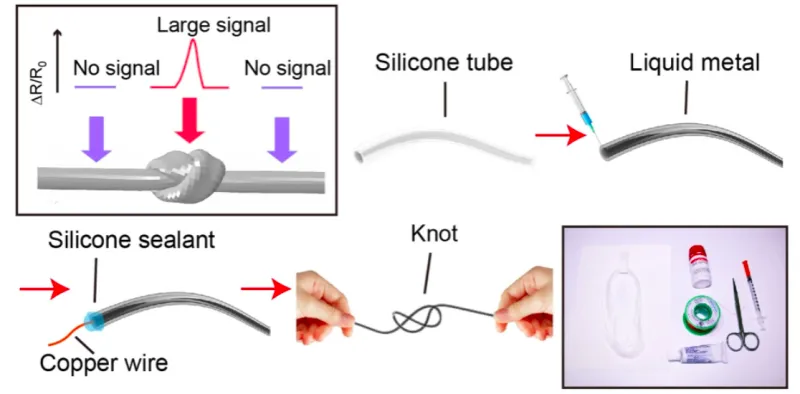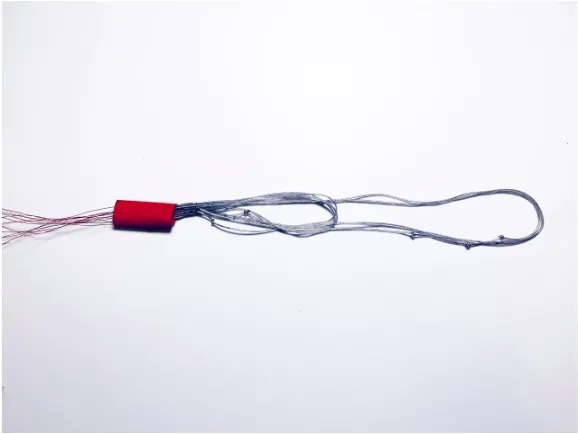Soft Pressure Sensors for Gastrointestinal Manometry
A flexible closed-loop system designed to perform gastrointestinal (GI) manometry, or the measurement of pressure across the GI tract, for the diagnosis of motility disorders.
Researchers
-
system and method for a flexible pressure sensor for gastrointestinal manometry
United States of America | Published application
Figures
Technology
The technology is made of long (multiple meters) and thin (roughly 0.6 millimeters in diameter) silicone/liquid metal composites containing knots tied either by hand or machine. These knots serve as pressure-sensitive nodes to convert applied pressure into resistive changes in the liquid metal conductors. Due to their increased sensitivity compared to the unknotted regions of the catheter, the knots also provide spatial accuracy such that the device can report the location of pressure changes in the GI tract. Importantly, the technology is inexpensive: it costs less than $0.26 per centimeter, and only requires a medium-priced multimeter as the recording hardware.
Problem Addressed
GI dysmotility—abnormal contractions of the muscles in the GI tract—is present in or contributes to many common conditions. However, current diagnostic methods, which rely heavily on manometry, have their limitations. High-resolution manometry, regarded as the top available option, uses a catheter-like device containing many closely-spaced pressure transducers to measure real-time pressure changes in the GI tract. Because of the large number of electrical connections, conventional high-resolution manometers are generally limited to lengths ranging from 15 to 80 centimeters. Current diagnostic methods are limited by cost, complexity, and size, making these diagnostic tools inaccessible in developing areas or outside of hospital outpatient settings. Since options other than manometry often fail to properly diagnose patients with motility disorders, there is a demand for a safe, reliable, accessible and cost-effective method for GI manometry.
Advantages
-
Simple design and inexpensive manufacturing, offering accessibility in low-resource settings and a disposable device opportunity in all market sectors.
-
Safe for human use due to small sensor diameters and low toxicity of liquid metal.
-
Customizable sensor configurations and distributions, accommodating different areas of the GI tract with differing anatomy and motility.
Publications
Kewang Nan, Sahab Babaee, Walter W. Chan et al. Low-cost gastrointestinal manometry via silicone–liquid-metal pressure transducers resembling a quipu. Nat Biomed Eng. 2022 Mar 21.
License this technology
Interested in this technology? Connect with our experienced licensing team to initiate the process.
Sign up for technology updates
Sign up now to receive the latest updates on cutting-edge technologies and innovations.


